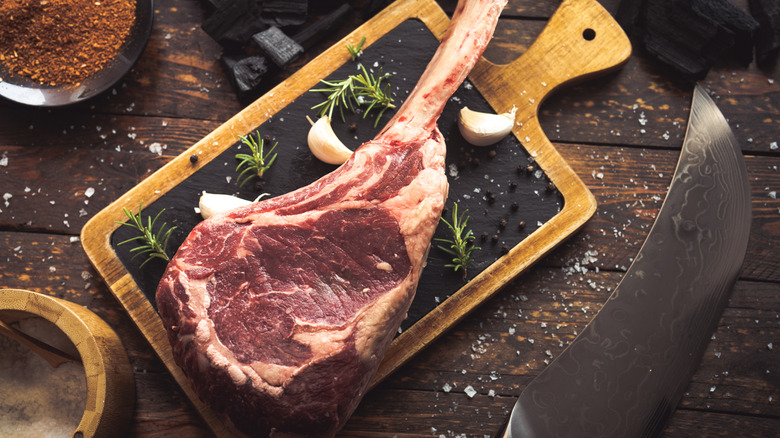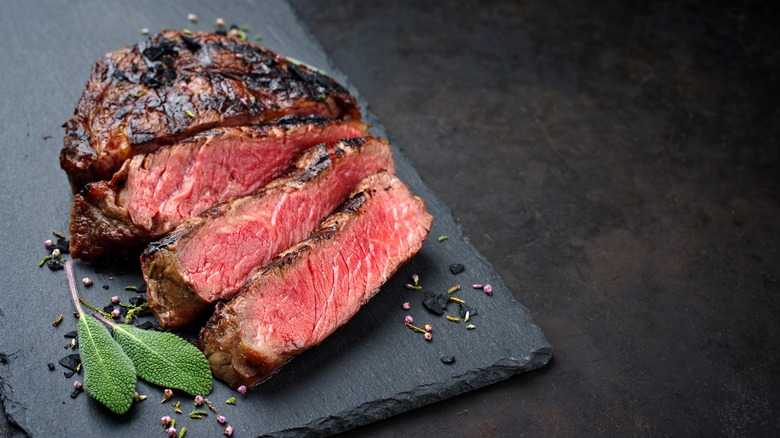The Best Cuts Of Beef To Dry Age For Restaurant-Worthy Steak At Home
Dry aged steak comes with a steep price, and for good reason. The tender mouthfeel and rich flavor is unparalleled, making it worth the higher price point. Yet, if you don't want to dole out the cash for the meat, you can always dry age steak at home to get quality beef — you'll just need the right cut.
Since dry aged beef is a prized product, you don't want to spend time recreating it at home for subpar results. Some cuts of steak are more suited for dry aging than others, and K.C. Gulbro, the owner of both FoxFire and Copper Fox and chef ambassador for Certified Angus Beef, has just the ones in mind. "Lean meats should be avoided," he advises. "I would suggest meats with a high marble fat rate, like ribeyes or cuts with a bone, like an export (bone-in ribeye) or New York strip."
Part of the dry aging process involves the beef shrinking in size as moisture is drawn out. If you still want a substantial amount of meat that isn't dried out, opt for steak with a good amount of fattiness. Both New York strip steak and export style steak have a great amount of marbling that lends to the tenderness of the meat as it ages.
What size of steak should you dry age?
After determining the best cut of meat to dry age, you'll have to figure out whether or not you want to cut it down at all. Gulbro prefers to keep it intact. He says, "I like to use whole-muscle meats as opposed to individual cut steaks, like rib-loin and striploin (short loin), as they have a nice fat cap." If you're wondering how steak remains so tender when being dried for weeks, it's all thanks to the fat cap, or the layer of fat around the beef. It helps to shelter the meat from becoming dried up. Steaks like striploin have a relatively thick fat cap, which keeps the beef better protected.
Although Gulbro does value the fat, he also believes it's helpful to get rid of some of it when dry aging meat. "Minimally trimming the fat helps add moisture and prevents the steak from over-drying," he explains. "It also helps with longer dries." Additionally, it aids in the taste of the finished product. "The fat and bones help add flavor and even out the drying process, reducing the amount of weight loss you would see in other cuts."

